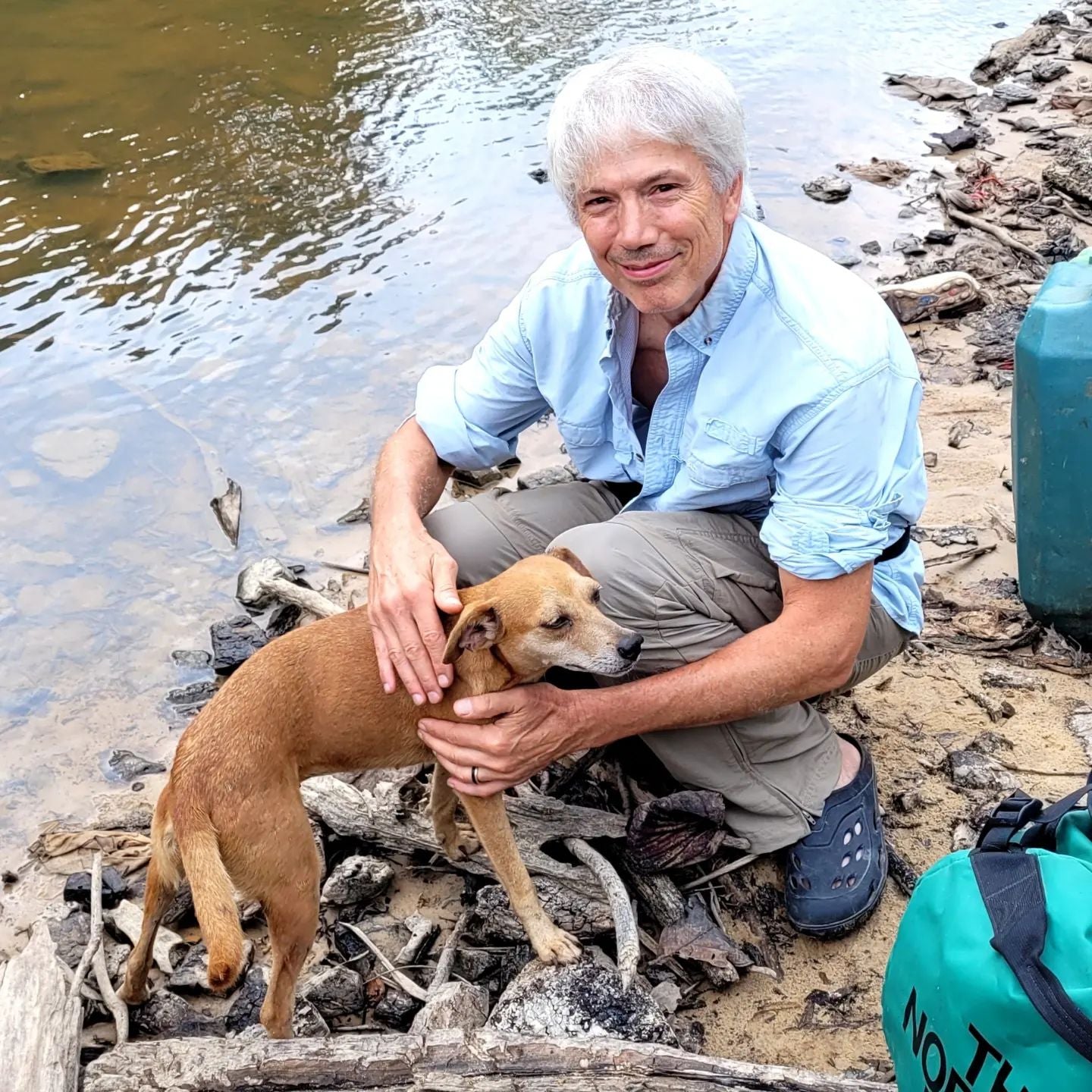by Campbell Plowden
October 9, 2022
I love the hour before dawn at Brillo Nuevo when a plethora of birds announce their presence to the world. I can ID a few chirps, and my science brain knows they are competing more than cooperating in the auditory realm, but I don’t care. It’s a glorious way to slowly wake up in my hammock.


In the course of our week in the Ampiyacu, I saw a small parrot intently chewing a USB cable attached to an inverter. A white-throated toucan named Nancho comically hopped around making clicking sounds. I said a silent prayer and duly photographed a bright crimson tanager that a boy had casually killed with his sling shot. I only caught one small piraña on a long hot morning fishing, but I was very happy when a mottled brown butterfly landed on my arm to leisurely sip my sweat. I marveled how evolution had produced a triangular butterfly with fake eyes at its rear.



I love wildlife, but I developed a deep affection for a little brown dog who hung around our house in Brillo Nuevo. She didn’t seem to have an owner there, and we vaguely heard she might be from the village downriver. Like many dogs in the area, her ribs were showing, and she had a sore on one ear. Once I saw Yully give her some scraps, I regularly gave her my left overs and some granola and started calling her “Café.”

Unlike many other dogs there who are wary of frequent kicks and yells, Café approached me without fear and welcomed me rubbing her head. One time after finishing my lunch, I felt sad she wasn’t around, but as soon as I thought of her, she appeared at the top of the stairs. I entertained fantasies of adopting her, but on top of daunting logistics, I’m not sure she would have willingly given up her independent life in the forest village for a more constrained life in Iquitos or the US in a home occupied by several cats. We didn’t part company until our tumultuous trip downriver.






